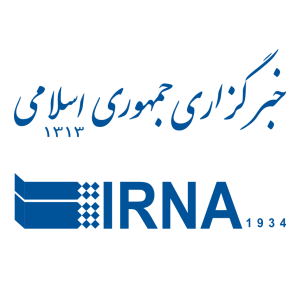According to the reporter of IRNAPLAS, the round table “Banking system in 2017, upcoming challenges and available solutions” was organized by the Banking Committee of Iran Financial Association at Tehran University’s Faculty of Management. In this round table, Dr. Tahmasab Mazaheri; Faculty member of Tehran University and former head of central bank and Dr. Ali Saadoundi; The former assistant professor of banking and finance at the Australian University and Longgong University in Dubai explained the existing conditions and provided implementation solutions.
** Three evils of the banking system from the words of the former head of the central bank
In the first part of his speech, Tahmasab Mazaheri identified the 3 main problems of Iran’s banking system as the weak balance sheet, the banking system’s conflict with foreign exchange policies, and the suspicion of usury in banking operations and said: The structure of Iran’s economy is such that banks can face problems in the income-expenditure and resource-consumption sectors. Because the interest paid to depositors is more than the interest received from borrowers. He explained in the description of the “conflict of the banking system with foreign exchange policies”: Banks face domestic and foreign exchange policies that may challenge them. Government and central bank foreign exchange policies as well as relations with foreign banks in the form of foreign exchange policies and exchanges are among these cases.
Mazaheri considered another problem to be usury in banking operations and added: From an economic point of view, global experience also shows that even in countries whose laws are not based on Sharia, they distinguish between usury and interest rate, and contracts that are subject to usury in terms of economic criteria are subject to heavy penalties and They will be strict.
** An effective step to prevent bank fraud
The former head of the central bank explained the threefold relationship between the depositor-bank-recipient of the facility and stated: In the discussion of loan or loan, what is loaned is removed from the property of the lender and becomes the property of the borrower. As a result, the partnership has no local profit and loss from the Arabs, and this is where the difference between a loan and a partnership becomes clear.
Referring to the approval of the law of interest-free banking operations in 1362, the former Minister of Economy stated that in this law, the use of Qarz-ul-Hosna funds is allowed only to pay the loan of Qarz-ul-Hosna, although in the following years, banks deviated from the law. In this way, the banks received the resources in the form of good loans and at a small cost, and spent it on granting investment facilities with high profits, and they obtained a lot of profit from this place. This was one of the deviation points of the banking system that started after the approval of this law. Of course, in the mid-70s to the mid-80s, this process was slow and almost stopped, but after that, the banks were again on a path outside the framework of the law, which fortunately, in the current period, returning to the path of the law is on the agenda.
** Banking operations without usury, healing prescription
He further stated that in case of leaving the framework of the usury-free banking law, the banking system will suffer from the disasters that were mentioned at the beginning of the discussion, i.e., a loss-making balance sheet and the suspicion of usury. If the banks, to attract deposits, state an ali-account figure that has a definite aspect, and this rate is more than the real profit, we will have a loss-making banking system with suspicion of usury.
** Separation of global banking from riba
In the continuation of this meeting, Saadoundi, while confirming Mazaheri’s statements, said that the banking system may face 3 types of imbalances, including profit and loss imbalance, asset and debt gap, and cash flow disruption.
He further stated that modern banking in the world has moved from usurious banking to non-usurious banking. In this system, there is no unusual profit that is not proportional to the real part of the economy. Also, the capital supply system in the world has moved towards a market-based system, and in fact, the structure of the financial system has moved away from the banking base. Also, the source of income of banks in the world is changing from interest-based income to service-based income. Eliminating interest and interest income is important from the economic point of view. Because if banks only focus on interest income, they will have problems in business cycles and boom and bust periods.
** The banking system got into trouble after controlling inflation
Saadoundi continued his speech with a question. How can we provide solutions to improve the efficiency of Iran’s economy despite the liquidity problem? He continued his speech by emphasizing the destructive power of the accumulation of shocks in the economy and stated that the stabilization of the inflation rate at rates lower than the real one can be considered as an example of the accumulation of shocks. By comparing the inflation rate in Iran and Venezuela, he stated that the inflation rate in these two countries experienced a similar trend in both countries at the beginning of the 1990s, and that with the inauguration of the 11th government, we have seen the divergence of the inflation rate in the country. So inflation control policies were successful in this period.
According to him, however, since the government emphasized reducing the budget deficit and the injection of central bank resources into the interbank market was slow, the banks decided to compensate the lack of resources in another way instead of overdraft penalties, and as a result, They increased the interest of large deposits, and on the other hand, the granting of new facilities decreased, and the new facilities were also given to previous facilities recipients in the form of postponement and repayment of previous facilities. On the other hand, the stagnation in the real sector of the economy, following the government’s budget deficit reduction policy, led to an increase in the real interest rate. As a result, it can be said that the banking system, along with the real part of the economy, suffered from the control of a nominal variable, inflation. It should be noted that the nominal interest rate will not decrease with the decrease in inflation.
** How did the liquidity giant wake up?
سعدوندی با بیان اینکه اقتصاد متعارف معتقد است نیازمند تعادل بین سپرده و تسهیلات هستیم ادامه داد: در صورتی که این نسبتها تغییر کنند، دچار مشکل خواهیم شد. در صورتی که این نسبت به نفع تسهیلات تغییر کند بانک ناچار است منابع اعطای تسهیلات را از محلی غیر از سپردهها تامین کند که در این صورت با ریسک نقدینگی مواجه خواهد شد. در صورتی که این نسبت به نفع سپردهها تغییر کند بانک دچار مشکل سودآوری خواهد شد. این مشکلی است که نظام بانکی با آن مواجه است.
وی در تشریح این مشکل بیان کرد بانکها به دو صورت پرداخت سود به سپردهها و اعطای تسهیلات در فرآیند خلق پول شرکت دارند. مشکل اینجاست که در شرایطی، بانکها نمیتوانند تسهیلات پرداختی را باز پس گیرند. در واقع اصل تسهیلات، برابر با خلق پولی است که بانک انجام داده بنابراین، در مقابل خلق پولی که با اعطای تسهیلات انجام شده، حذف پول را خواهیم داشت.
سعدوندی در ادامه گفت اگر در یک نظام بانکی، سودهای موهومی پرداخت شود، خلق پول به شدت افزایش مییابد. از طرف دیگر اگر تسهیلات پرداختی نیز باز پس داده نشده باشند و با انباشت مطالبات معوق نیز مواجه باشیم، نقدینگی علیرغم شرایط رکودی و با حتی با رشد پایین پایه پولی، به شدت افزایش مییابد.
** دو روی سکه پنجره جمعیتی
شاخص قیمتها از سال 1392 تا 1396 به میزان 55 درصد رشد داشته در حالی که نقدینگی طی همین دوره 226 درصد رشد داشته است. اگر فاصله بین این دو از طریق رشد اقتصادی از میان برود، اظهارنظرهایی که نرخهای تورم بالا را برای اقتصاد ایران پیشبینی میکنند، با شکست مواجه خواهند شد. اما چگونه میتوان به رشد اقتصادی مورد نظر، دست یافت؟
سعدوندی برای پاسخ به این سوال، به ویژگی مشترک 5 کشور بعد از جنگ جهانی دوم، اشاره کرد. ژاپن، چین، کره جنوبی، ترکیه و ایران به لحاظ پنجره جمعیتی و امکان رشد برونزا، شرایط مشابهی بین سایر کشورها داشتهاند. از دیدگاه یک ناظر خارجی، ایران به لحاظ قرارگیری در وضعیت ویژه جمعیتی، امکان رشد درونزا را مشابه ژاپن، چین و کره جنوبی خواهد داشت و به همین دلیل است که تحریمهای اقتصادی در این برهه، زمانبندی شدهاند. پنجره جمعیتی ایران از سال 2010 باز شده است و 3 سال به دلیل تحریمها نتوانست عمل کند.
وی در ادامه افزود در صورتی که نتوانیم از این مزیت ویژه بهرهمند شویم، آن را به تهدید تبدیل خواهیم کرد، چرا که همین جمعیت جوان در صورت بیکاری، میتواند از موانع رشد اقتصادی شود و شرایط کاملا معکوس خواهد شد. ما باید از این شرایط بیشترین بهره را ببریم، تغییراتی که در زیرساختهای اجتماعی ایران به وجود آمده، جمعیت جوان و نرخ بالای تحصیلات زنان که قابل مقایسه با کشورهای توسعهیافته است، به طور بالقوه امکان رشد اقتصادی را برای کشور فراهم کردهاند.
** چه باید کرد؟
سعدوندی در بخش پایانی سخنان خود، راهکارهایی برای نظام بانکداری ارائه داد که متناسب با شرایط کشور، امکان ارتقای اقتصاد ایران را فراهم میکنند. وی «انتشار اوراق بانکی»، «اوراقسازی بدهیهای موجود» و «ایجاد حسابهای بازار پول و جمعآوری سپردههای خرد» را به عنوان راهکارهایی که کمترین آسیب را به همراه دارند نام برد.
وی در تشریح راهکارهای پیشنهادی بیان کرد در حالت تعادلی بانکها 20 تا 25 درصد پورتفوی خود را به اوراق اختصاص می دهند. از آنجا که ضریب کفایت سرمایه اوراق صفر است بازدهی اوراق قابل رقابت با سایر داراییهای بانک خواهد بود، با این مزیت که اوراق به دلیل نفوذ پذیری بسیار بالا در مدیریت ریسک نقدینگی بانکها مثمر ثمر خواهد بود. با ایجاد بازار بسیار نقد اوراق که از سوی بانک مرکزی بازارگردانی میشود، نیاز به ذخایر مازاد مرتفع میشود و عملیات ریپو نیز تسویه بین بانکی را تسهیل میکند.


